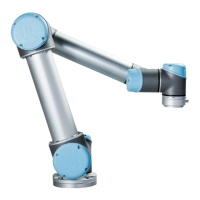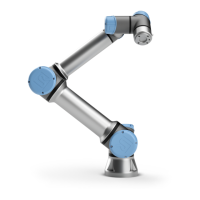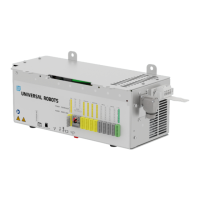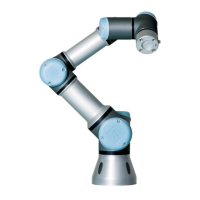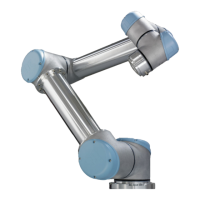1.7 Risk Assessment
1.6 Intended Use
UR robots are industrial robots intended to handle tools/end effectors and fixtures, or to pro-
cess or transfer components or products. For details about the environmental conditions under
which the robot should operate, see appendices B and D.
UR robots are equipped with special safety-related features, which are purposely designed to
enable collaborative operation, where the robot system operates without fences and/or together
with a human.
Collaborative operation is only intended for non-hazardous applications, where the complete
application, including tool/end effector, work piece, obstacles and other machines, is without
any significant hazards according to the risk assessment of the specific application.
Any use or application deviating from intended use is deemed to be impermissible misuse. This
includes, but is not limited to:
• Use in potentially explosive environments
• Use in medical and life critical applications
• Use before performing a risk assessment
• Use outside of stated specifications
• Use as a climbing aid
• Operation outside the permissible operating parameters
1.7 Risk Assessment
One of the most important things that an integrator needs to do is to perform a risk assessment.
In many countries this is required by law. The robot itself is partly completed machinery, as the
safety of the robot installation depends on how the robot is integrated (E.g. tool/end effector,
obstacles and other machines).
It is recommended that the integrator uses ISO 12100 and ISO 10218-2 to conduct the risk assess-
ment. Additionally the integrator can choose to use the Technical Specification ISO/TS 15066 as
additional guidance.
The risk assessment that the integrator conducts shall consider all work tasks throughout the
lifetime of the robot application, including but not limited to:
• Teaching the robot during set-up and development of the robot installation
• Troubleshooting and maintenance
• Normal operation of the robot installation
A risk assessment must be conducted before the robot arm is powered on for the first time. A
part of the risk assessment conducted by the integrator is to identify the proper safety configura-
tion settings, as well as the need for additional emergency stop buttons and/or other protective
measures required for the specific robot application.
Identifying the correct safety configuration settings is a particularly important part of develop-
ing collaborative robot applications. See chapter 2 and part II for detailed information.
UR5/e-Series I-8 Version 3.11
Copyright © 2009–2019 by Universal Robots A/S. All rights reserved.
